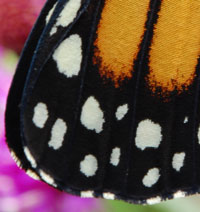 Our regular season of programs has concluded, but we'll have garden tours this summer, so stay tuned! In the "better late than never" category (or more positively, "just in the nick of time"):
TONIGHT (Wed. Apr. 30) at 9 pm!!! NOVA
(WCNY Ch. 24) is showing "The Incredible Journey of the Butterflies" following the 2,000 mile journey of the monarchs. More information is at http://www.pbs.org/wgbh/nova/ .  Janet Allen, President, HGCNY
|
|
2014 Native Plant Shopping Guide
|
 |
Our FREE guide is ready for download!
 What question do we get asked most often? Where can I find native plants. Now you'll know! What question do we get asked most often? Where can I find native plants. Now you'll know!
Our 2014 Guide has the same general format as our previous Guides with a few new codes:
- F indicates Pesticide-Free plants
- BB indicate plants especially good for bumble bees. Both qualities are important.
Click on the photo above or HERE to download the entire Guide as one .pdf file.
OR you can download any or all of the parts separately for printing.
Here are the THREE PARTS of this guide:
If your computer downloads the files, but you don't know where they are, look in your browser settings to find your Downloads folder.
Still having trouble? Contact us and we'll email the .pdf file to you directly.
The Introduction section
Whether or not you print it out, please read the Introduction for Shopping Tips, contact information for the vendors and other helpful information.
We recommend that you CALL AHEAD before you set out on your shopping trip! Confirm the hours the nurseries are open and confirm that your selected plants are currently in stock. What is available in May, for example, may not be available in July. Call ahead to avoid disappointments and wasted gas!
Thank you for patronizing our local native plant nurseries. Supporting these nurseries is an important way to grow the native plant movement.
|
 |
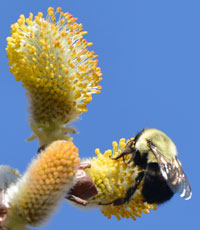 | | Bumble bee on a pussy willow (Salix discolor) |
Some interesting facts about bumble bees: * Unlike many of our native solitary bees, bumble bees are social insects with a queen and workers. * Unlike honey bees, which are not native to this continent, there are about fifty species of bumble bees native to North America. * Unlike honey bees, whose queen can live up to five years, bumble bee queens and all the rest of the colony die in the fall, leaving behind only the new queens, which start their own colonies in the spring. * Unlike honey bees whose colonies can number in the thousands, bumble bee colonies (which start from scratch each year) are much smaller with perhaps a hundred or so individuals. * One of their preferred nesting sites is abandoned rodent burrows. * Bumble bees are very effective pollinators of native plants, and because of their special "buzz pollination" ability, they surpass honey bees at pollinating plants such as tomatoes, blueberries, peppers, and others. * Bumble bees work in cooler weather and in lower light conditions than do honey bees. * Unlike native solitary bees, bumble bees do have a colony to defend, but they tend to be non-aggressive and easy to accommodate into our own outdoor lives. * Like honey bees, their numbers are in an alarming decline. You can help these valuable creatures right in your own yardBeside providing some bare earth for them to use for nesting, you can provide the pollen and nectar they need by -- what else? -- planting native plants! Even then, some natives are more useful to bumble bees than others. To help you select bumble bee-friendly plants, we have compiled a list of Northeast native plants from the general lists provided by the Lady Bird Johnson Wildflower Center and by The Xerces Society. Download http://www.hgcny.org/docs/Bumblebees.pdf, which includes Sun and Water conditions for each. |
 |
From The Xerces Society:
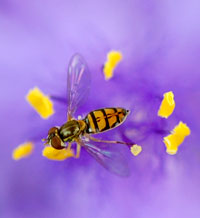 | Flower fly on a
spiderwort flower |
Neonicotinoids are a group of insecticides that are used widely on farms, as well as around our homes, schools, and city landscapes. Used to protect against sap-sucking and leaf-chewing insects, neonicotinoids are systemic, which means they are absorbed by the plant tissues and expressed in all parts, including nectar and pollen. Unfortunately, bees, butterflies, and other flower-visiting insects are harmed by the residues. Extremely concerning is the prolific inclusion of these insecticides in home garden products. Home garden products containing neonicotinoids can legally be applied in far greater concentrations in gardens than they can be on farms - sometimes at concentrations as much as 120 times as great which increases the risk to pollinators.
As a gardener, you have an unique opportunity to help protect pollinators by avoiding the use of these insecticides, asking your local nursery or garden center if plants have been treated with neonicotinoids, and encouraging your city or park district to use alternatives to neonicotinoids on plants that are visited by bees or are bee-pollinated.Go to this Xerces Society webpage to read more and download these featured resources:* See the brand names for neonics * Protecting Bees from Neonicotinoid Insecticides
in Your Garden (a brochure)
* Neonicotinoids in Your Garden (an article from the Xerces Wings magazine)
|
 |
|
|
|
Start planning for our fall plant sale
|
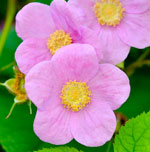 | | Flowering raspberry (Rubus odoratus) |
It's not too early to starting thinking of our fall plant sale. As you observe your plantings this spring and summer, note which plants you'd like to donate to our sale. Consider potting them up early so they're established in their pots in time for our sale on Sept. 13. Our plant sale profits fund this newsletter.
|
Habitat Gardening Presentations
|
I'll be doing some presentations that are FREE and open to the public.
Tues. May 13
6:30 pm:
Creating a Bird-Friendly Yard
Northern Onondaga Library at Cicero 8686 Knowledge Ln. Cicero.
Sat. June 21
10:00 am:
Creating a Monarch Waystation and a Butterfly-Friendly Landscape
Northern Onondaga Library at Cicero 8686 Knowledge Ln. Cicero.
|
Wildflower Walks at Baltimore Woods
Sat./Sun. 2-3pm
May 3/4; May 10/11
|
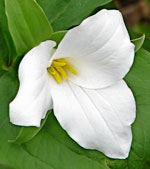 Baltimore Woods' premier woodland wildflower garden is a local treasure.
Join caretaker Audrey Loewer for a pleasant walk through one of the wonders of spring. Each week new species will bloom, and Audrey will reveal their past and present medicinal and culinary uses. Handicap accessible; please call ahead if you need assistance.Please register: Phone: 315-673-1350Email: info@baltimorewoods.org Donations appreciated. |
Since HGCNY is a chapter of the national organization Wild Ones, when you become a member of Wild Ones, you're automatically a member of HGCNY, too. And since Wild Ones is an official not-for-profit, your membership is tax-deductible.
It's easy to become a member, receive the bimonthly Wild Ones Journal, and support our mission.
|
|
As more of us participate on our Facebook page, this will become a useful resource for asking (and answering!) local HGCNYers' questions about habitat gardening.
|
|
Our Habitat Garden website
|
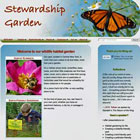 Visit Our Habitat Garden website for information on providing habitat, earth-friendly gardening practices, plants, and various creatures here in Central New York. |
Visit Our Edible Garden website to see an example of a local vegetable and fruit garden. An edible garden is a perfect complement to your habitat garden.
|
|
 |
|